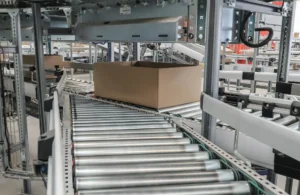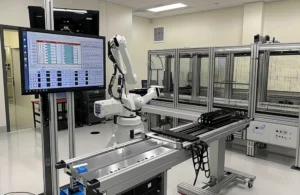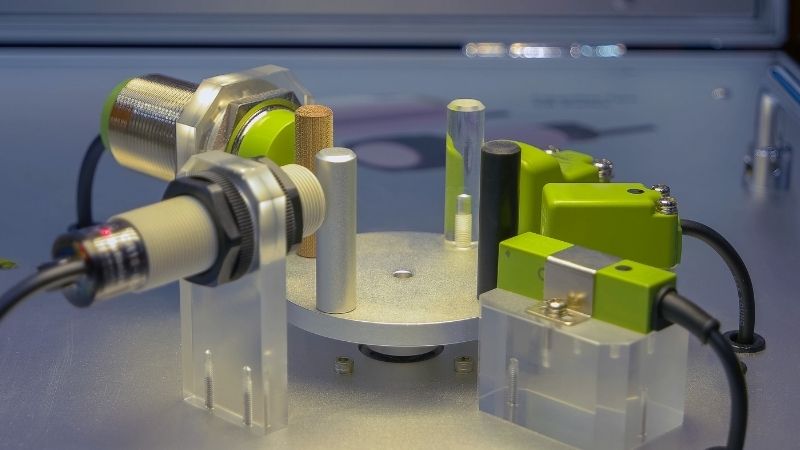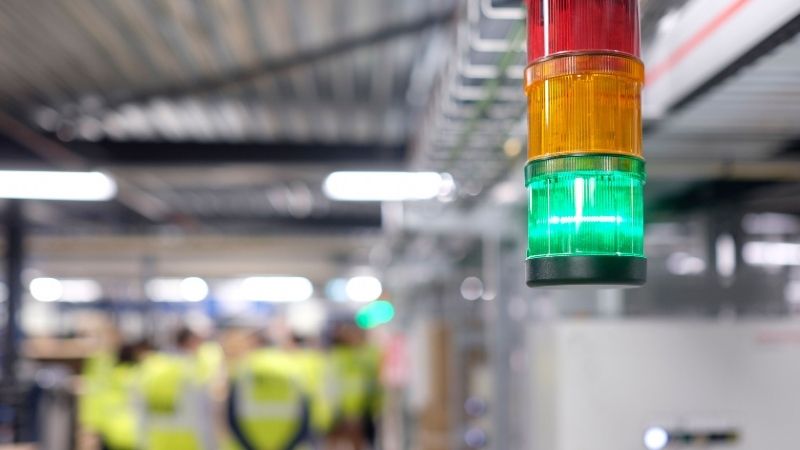Sensor Kedekatan Induktif 3-Kabel: Panduan Lengkap
Dalam panduan komprehensif ini, kami akan menjelajahi semuanya mulai dari prinsip dasar hingga aplikasi praktis, membantu Anda membuat keputusan yang tepat untuk kebutuhan otomatisasi Anda.
Daftar isi
Apa itu Sensor Kedekatan Induktif 3-Kabel dan Bagaimana Cara Kerjanya?
Sensor jarak induktif 3-kawat adalah perangkat elektronik yang mendeteksi objek logam tanpa kontak fisik. Sensor ini menggunakan medan elektromagnetik untuk mendeteksi keberadaan atau ketiadaan target konduktif. Tidak seperti sakelar mekanis tradisional, sensor induktif menawarkan beberapa keunggulan:
- Tidak memerlukan kontak fisik untuk deteksi
- Umur operasional yang panjang karena tidak ada keausan mekanis
- Kemampuan frekuensi switching tinggi
- Ketahanan yang sangat baik terhadap lingkungan industri
Sensor beroperasi dengan menghasilkan medan elektromagnetik dari permukaan penginderaannya. Saat target logam memasuki medan ini, arus eddy diinduksi dalam target, yang menyebabkan perubahan pada rangkaian osilator sensor. Perubahan ini memicu keluaran untuk beralih status.
PNP vs NPN: Konfigurasi Keluaran Mana yang Harus Anda Pilih?
Salah satu keputusan paling penting saat memilih sensor jarak 3-kawat adalah memilih antara tipe keluaran PNP dan NPN. Mari kita bahas perbedaannya:
Keluaran PNP (Sumber):
- Mengalihkan tegangan positif ke beban
- Umum dalam aplikasi Eropa
- Terhubung ke input sinking PLC
- Lebih tahan terhadap kebisingan listrik
Keluaran NPN (Tenggelam):
- Mengalihkan ground ke beban
- Populer di pasar Asia
- Terhubung ke input sumber PLC
- Umumnya lebih murah
Pilihan antara PNP dan NPN sering kali bergantung pada sistem kontrol yang ada dan preferensi regional Anda. Pelajari lebih lanjut tentang sensor industri untuk spesifikasi terperinci.
Bagaimana Cara Memasang dan Menghubungkan Sensor Kedekatan 3-Kabel Anda?
Pemasangan dan penyambungan yang tepat sangat penting untuk kinerja sensor yang optimal. Berikut panduan langkah demi langkahnya:
- Koneksi Catu Daya:
- Kabel coklat → Tegangan DC positif (biasanya 12-24V DC)
- Kabel biru → Negatif/Ground
- Kabel hitam → Sinyal keluaran
- Pertimbangan Pemasangan:
- Pertahankan jarak penginderaan yang tepat
- Hindari gangguan dari benda logam di dekatnya
- Pertimbangkan faktor lingkungan (suhu, getaran)
- Koneksi Beban:
- Hubungkan beban antara output dan catu daya
- Pastikan tegangan dan nilai arus yang tepat
- Gunakan proteksi lonjakan arus yang sesuai
Periksa panduan integrasi PLC kami untuk koneksi sistem otomasi yang terperinci.
Aplikasi Umum dan Penggunaan Industri
Sensor jarak induktif 3-kawat banyak digunakan dalam berbagai aplikasi industri:
| Aplikasi | Manfaat | Industri Umum |
|---|---|---|
| Deteksi Posisi | Akurasi tinggi, respon cepat | Otomotif, Pengemasan |
| Deteksi Logam | Pengoperasian yang andal, umur panjang | Manufaktur, Pertambangan |
| Pemantauan Kecepatan | Pengukuran yang tepat, daya tahan | Sistem Konveyor |
Sensor ini sangat berharga dalam jalur produksi otomatis Dan aplikasi robotik.
Tips Pemecahan Masalah dan Perawatan
Untuk memastikan pengoperasian yang andal, pertimbangkan praktik pemeliharaan berikut:
- Pembersihan wajah penginderaan secara teratur
- Pemeriksaan integritas koneksi secara berkala
- Verifikasi penyelarasan yang tepat
- Pemantauan stabilitas tegangan suplai
Pertanyaan yang Sering Diajukan
Rentang penginderaan tipikal bervariasi dari 1 mm hingga 40 mm, tergantung pada ukuran sensor dan material target.
Sensor 3-kawat menawarkan koneksi daya dan keluaran yang terpisah, memungkinkan integrasi yang lebih fleksibel dan kinerja yang lebih baik.
Tidak, sensor induktif dirancang khusus untuk mendeteksi benda logam saja. Untuk bahan non-logam, pertimbangkan sensor kapasitif atau fotolistrik.
Kebanyakan sensor menyertakan indikator LED yang menunjukkan status deteksi dan pengoperasian yang tepat.
Dukung proyek Anda dengan Sensor Omron, Keyence, Schneider baru dan asli – tersedia sekarang!
Kesimpulan
Poin-poin Utama
- Sensor jarak induktif 3-kawat adalah komponen penting dalam otomasi industri modern
- Pilih antara keluaran PNP dan NPN berdasarkan persyaratan sistem Anda
- Pemasangan dan pemeliharaan yang tepat memastikan pengoperasian yang andal
- Pemecahan masalah rutin mencegah waktu henti dan memperpanjang umur sensor
- Pertimbangkan faktor lingkungan saat memilih dan memasang sensor
Hubungi pakar otomasi kami untuk bantuan yang dipersonalisasi dengan aplikasi sensor Anda.
Hubungi kami
Cukup isi nama, alamat email, dan deskripsi singkat pertanyaan Anda dalam formulir ini. Kami akan menghubungi Anda dalam waktu 24 jam.
Kategori Produk
Produk Penjualan Panas
Anda Mungkin Juga Menemukan Topik Ini Menarik

Apa yang dideteksi oleh Sensor Fotolistrik?
Anda mungkin bertanya-tanya, apa sebenarnya yang dideteksi sensor fotolistrik?
Sederhananya, sensor fotolistrik mendeteksi keberadaan atau ketiadaan objek menggunakan cahaya. Sensor ini merupakan komponen penting dalam otomasi, yang digunakan di berbagai industri untuk memastikan proses berjalan lancar dan efisien.

Memahami Human-Machine Interface (HMI) dalam Otomasi Industri
Memahami Human-Machine Interface (HMI) dalam Otomasi Industri Dalam dunia otomasi industri yang berkembang pesat, Human-Machine Interface (HMI) memainkan peran penting dalam industri.

Apa itu PLC dan Mengapa Penting bagi Bisnis Anda?
Apa itu PLC dan mengapa itu penting bagi bisnis Anda? Merasa kewalahan dengan perubahan konstan dalam otomasi industri






